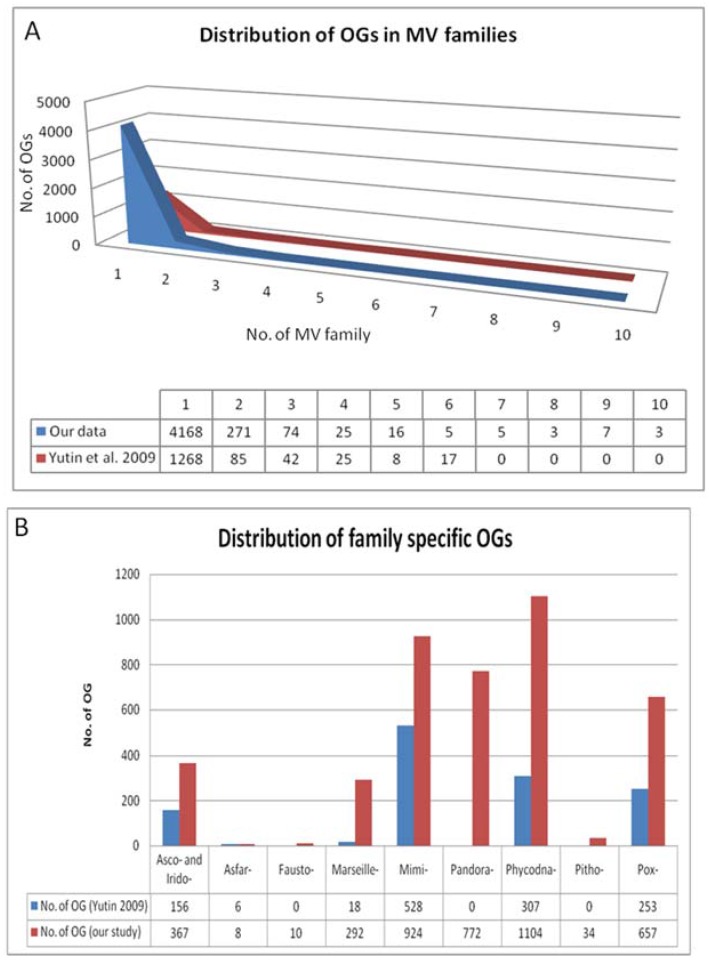Figure 2.
(A) Distribution of orthologous groups (OGs) in Megavirale families. OGs identified in our study (in blue) have been distributed in 10 families and compared with those identified in a previous study (in red). A large percentage of OGs are represented by only one Megavirale family (approximately 80% in both cases), whereas fewer OGs are shared between families. (B) Distribution of family specific OGs. Phycodnaviridae (Phycodna-) and Mimiviridae (Mimi-) contribute to the maximum number of family specific OGs in both studies. Our study (in red) identified 772 new OGs in pandoraviruses (Pandora-), 34 in pithovirus (Pitho-), 10 in faustoviruses (Fausto-), 657 in Poxviridae (Pox-) and 367 in Ascoviridae (Asco-) and Iridoviridae (Irido-) combined, as compared with the study done by Yutin et al. [9] (in blue).

